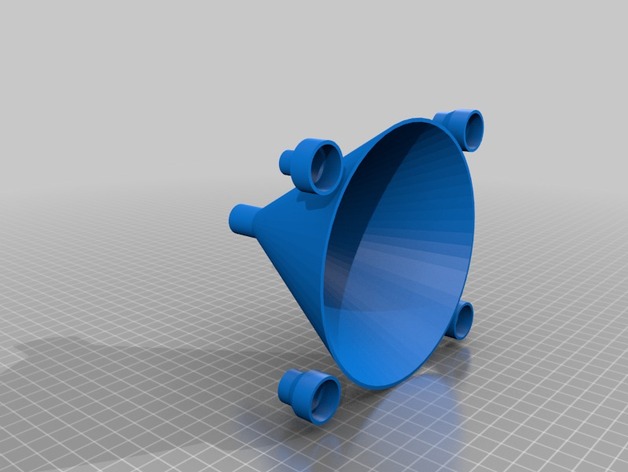
Funnel Flow Science / Math Project
thingiverse
Looking for an Engaging Math/Science Project to Foster Young Engineers? Design a 3D printed funnel with multiple nozzles of various sizes and conduct an experiment to test the correlation between the time it takes sand to flow through each nozzle and the size of the corresponding hole. My daughter proposed a hypothesis: as the area of the hole increases, the time for sand to pass through decreases in a non-linear manner. Print Settings Printer: BQ Witbox Rafts: No Supports: No Resolution: 0.20mm Infill: 20% Notes: This print is quite straightforward and comes out nicely on a PRINTinZ Plate, making it ideal for educational settings. The Experiment... Test Method For consistency across all tests, the largest nozzle is identical in size to the funnel's opening. To ensure accurate results, use clean, dry sand by passing it through a screen to remove any debris or large pieces. When pouring sand into the funnel, hold your finger over the top and level off the surface with a straight edge. Start the timer as soon as you release your finger and keep the funnel steady while taking measurements. Run at least three trials for each nozzle size and record the average time taken to empty each one. Create a plot illustrating the relationship between time (in seconds) and nozzle diameters or areas. For optimal results, choose nozzles with diameters yielding the following hole areas: 1.0 in² 0.75 in² 0.50 in² 0.25 in²
With this file you will be able to print Funnel Flow Science / Math Project with your 3D printer. Click on the button and save the file on your computer to work, edit or customize your design. You can also find more 3D designs for printers on Funnel Flow Science / Math Project.
